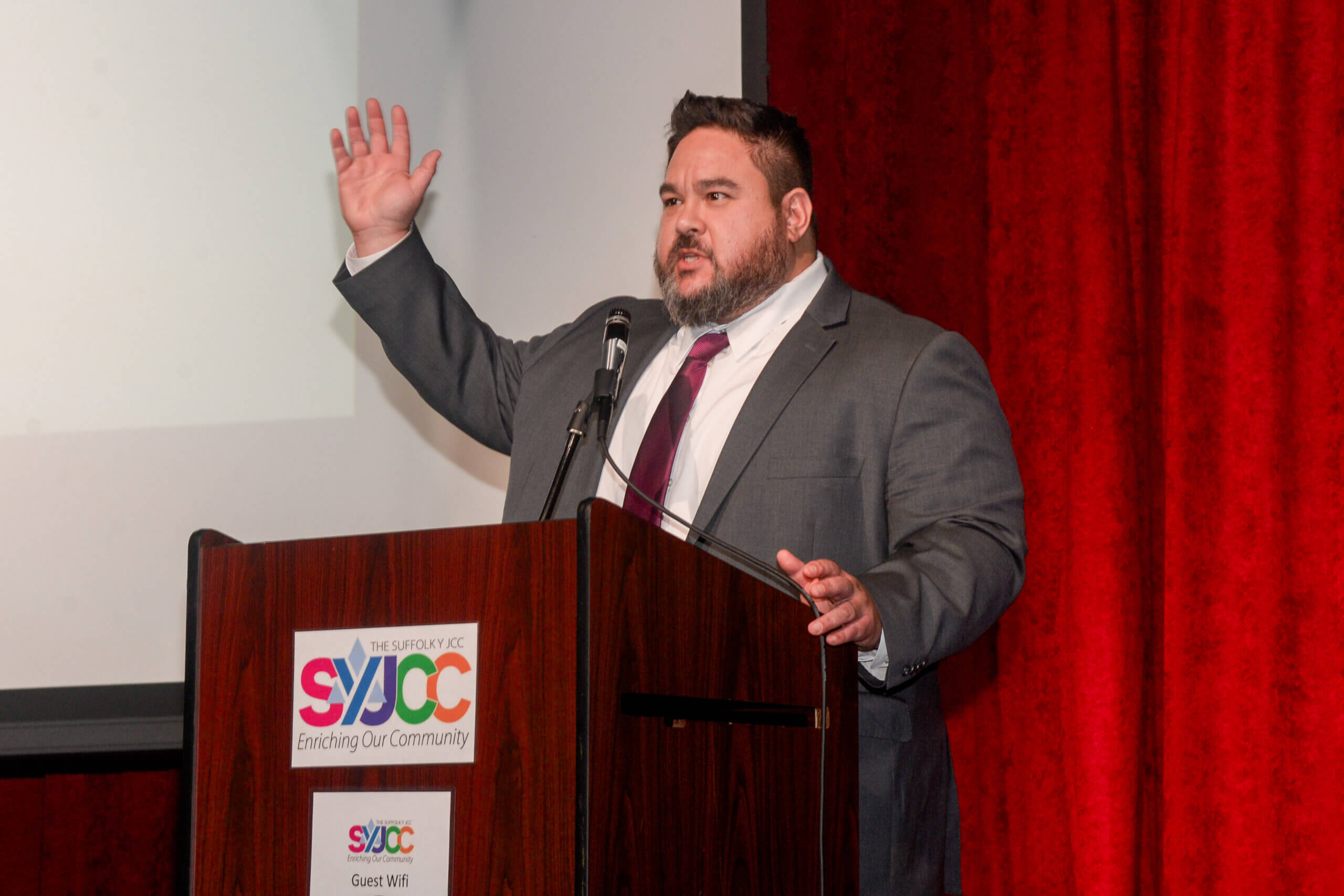Long Island is taking a leading role in the burgeoning renewable energy industry in what may be the biggest business development since the Grumman Corporation built the Lunar Module in Bethpage to put the first men on the Moon in 1969.
That was the takeaway from the Long Island Energy Conference on Oct. 12 at the Suffolk Y Jewish Community Center in Commack, when local leaders touted efforts to build New York State’s first offshore wind farms in the Atlantic Ocean, local solar farms, and the increasing popularity of electric-powered vehicles. But it’s not as simple as turning a switch and making Long Island go green — careful steps must be taken to ensure it’s done correctly, experts said at the conference.
“When we talk about the energy transition, we always talk about not leaving anyone behind,” Rudy Wynter, president of National Grid, told the Press. “We have to make sure the workforce is ready for that transition, and make sure our customers are ready for that transition. We invest heavily in workforce development. We invest in workforce retraining, if needed for our workforce as well. This transition is going to take some time — it’s not going to be fast.”

The drive comes as New York State aims to reduce greenhouse gas emissions 40% by 2030 and 85% by 2050, part of a nationwide push to phase out the use of fossil fuels that have contributed to climate change.
To that end, Suffolk County Community College boasts an initiative to help train green energy employees.
“We are one of the founding partners of the National Offshore Wind Training Center,” said Edward Bonahue, president of SCCC. “This retrains folks who are already on the job for the special skills involved with offshore wind. We also have emerging partnerships with PSE&G to train a new generation of powerline transmission workers.”
Dan Lloyd, founder of the nonprofit advocacy group Minority Millennials, is working to make sure that the next generation of energy workers is diverse.
“We’re really looking forward to jobs where the renewable, sustainable industry will really be in place,” Lloyd said. “We are on the board of the National Training Center, with Suffolk Community College. We want to make sure we get the word out how to create a diverse talent pipeline into the training center for those that are interested.”
Advocates also want to be sure that communities benefit from green energy and are able to safely make the transition.
“Energy affects all of us in so many different ways,” said Neela Mukherjee Lockel, president and CEO of the EAC Network. “But while I think that a lot of the proposed changes that are coming through are important, it’s also important to think about how to roll them out and how they’re going to be impacting all of our communities very thoughtfully. We have to put the time and the intention into thinking through how we can make sure that all of these changes are feasible, available, and accessible to all.”
State Sen. Mario Mattera (R-St. James), the ranking member on the senate energy and telecommunications committee, told the Press he would like to see Long Island look into more forms of renewable energy than just wind and solar.
“I’m working on other renewable energies like green hydrogen, which is very important,” Mattera said. “Geothermal, nuclear, and more.”
Matt Cohen, president of the Long Island Association (LIA), the region’s largest business advocacy group, is looking forward to the development of offshore wind farms.
“LIA is all in on offshore wind,” Cohen said. “Long Island has a unique opportunity to be a national leader in the offshore wind industry when with this emerging industry, we also have an opportunity to create thousands of clean energy jobs, and really be a significant contributor to combating climate change.”
Over 100 people attended the conference to learn the latest.
“It’s great to see people come out with an interest in this topic,” Will Hazelip, president of National Grid Ventures Northeast, said. It’s actually so critical. “For so long in America, in particular, we’ve just taken energy for granted. We live and breathe it every day. And it’s great to see other people come out and want to get educated about it and talk about what’s going on.”
Closing remarks were given by Sammy Chu, CEO of Edgewise Energy, a commercial energy solutions company.
“My biggest hope is that we all continue to work together,” Chu told the Press. “We need to make sure that we understand that we’re all invested in this, that everyone has something to contribute to this, and that we continue to do the work because it’s gonna take all of us to get there.”
[sendtonews key=”xGZN6mgEf7-3161490-14108″ type=”single”]




































